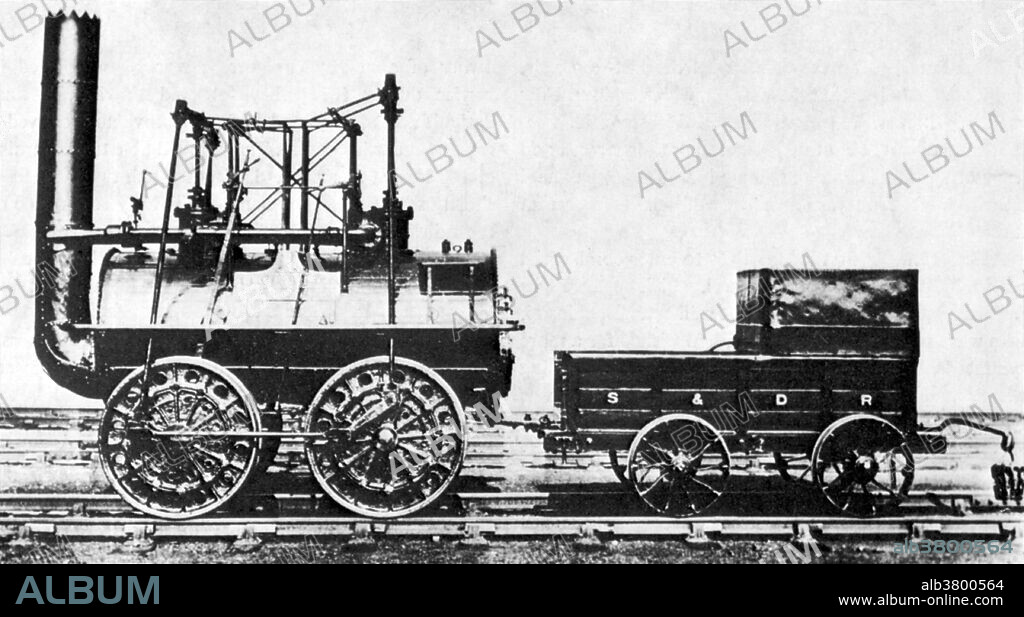alb3800564
George Stephenson, "Locomotion No. 1", 1825

|
Add to another lightbox |
|
Add to another lightbox |



Title:
George Stephenson, "Locomotion No. 1", 1825
Caption:
Locomotion No. 1 (original name Active) is the first steam locomotive to carry passengers on a public rail line, the Stockton and Darlington Railway. Built by George and Robert Stephenson's company Robert Stephenson and Company in 1824. Locomotion used all the improvements that Stephenson had pioneered in the Killingworth locomotives. It used high-pressure steam from a centrer-flue boiler, with a steam-blast in the chimney, to drive two vertical cylinders, enclosed within the boiler. A pair of yokes above them transmitted the power downwards, through pairs of connecting rods. It made use of a loose eccentric valve gear, and was the first locomotive to use coupling rods to link its driving wheels together, rather than through a chain or gears.
Credit:
Album / NYPL/Science Source
Releases:
Model: No - Property: No
Rights questions?
Rights questions?
Image size:
4800 x 2646 px | 36.3 MB
Print size:
40.6 x 22.4 cm | 16.0 x 8.8 in (300 dpi)
Keywords:
1890S • 1892 • 19TH CENTURY • BLUCHER • BLUTCHER • BLüCHER • BW • CELEBRITY • CIVIL ENGINEERING • DESIGN • ENGINE • ENGINEERING • ENGLISH • EUROPEA • EUROPEAN • FAMOUS • GEORGE STEPHENSON • HISTORIC • HISTORICAL • HISTORY • IMPORTANT • INVENTION • KILLINGWORTH COLLIERY • LOCOMOTIVE • MACHINE MANUFACTURING • MECHANICAL ENGINEERING • NOTABLE • PHOTO • PHOTOGRAPH • RAILROAD • RAILWAY • REPLICA • SCIENCE • STEAM DRIVEN • STEAM ENGINE • STEAM LOCOMOTIVE • STEAM POWERED • STEAM TURBINE • STEAM • STEAM-DRIVEN • STEAM-ENGINE • STEAM-POWERED • STEAMENGINE • STEPHENSON • TECHNOLOGICAL • TECHNOLOGY • TRAIN • TRANSPORTATION • WELL-KNOWN
 Pinterest
Pinterest Twitter
Twitter Facebook
Facebook Copy link
Copy link Email
Email

